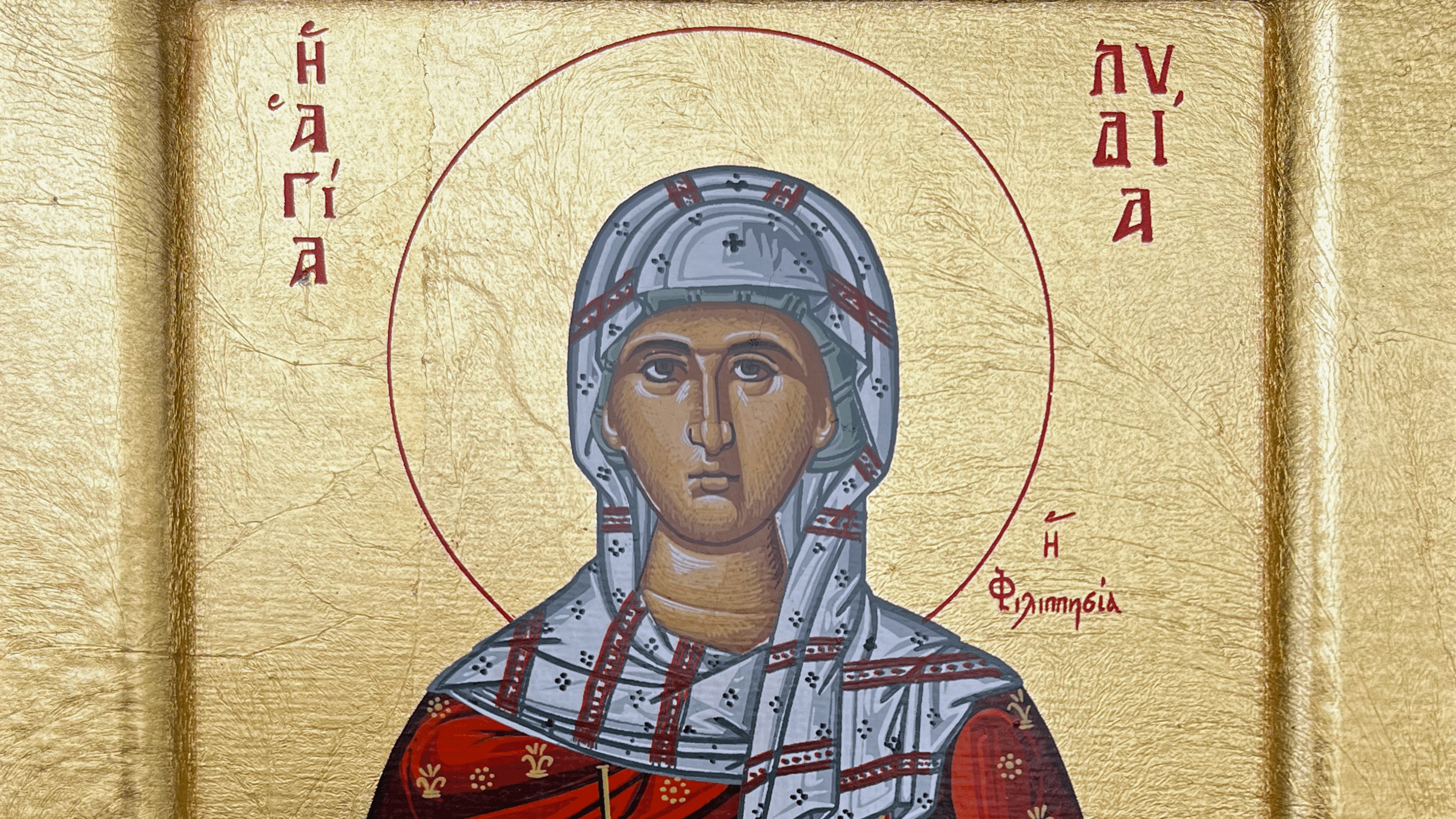Lydia of Thyatira remains a spectral presence in the Book of Acts; her trace a cipher left at the crossing where the Logos enters Europe, threading itself into the weft of a world asleep. Scriptural testimony records her only fleetingly: a seller of purple, a foreigner to the Roman tongue, yet the first whose heart is described as opened by the divine. The scene in Philippi is deceptively slight; a riverbank, a word uttered in the salt air, a household gathered in the quietude that precedes revolution. From this muted locus, a new current seeps into the foundations of Christendom, a flow that is the silent unfurling of the concealed sky beneath the world’s surface. Patristic remarks offer little elaboration, preferring the resounding violence of conversions more grandiose; and, yet, in the feminine silence of Lydia’s consent, an architecture forms, subterranean and veiled, which even now determines the shape of every altar.
I. The Opened Heart and the Purple Vein
The phrase remains crystalline: “And the Lord opened her heart, so that she attended to the words spoken by Paul.” The scriptural Greek signals an act wrought upon the deepest stratum; an unsealing of the chthonic wellspring where word and blood come together. Lydia, described first through her commerce with purple, is marked by the ancient association of the dye with sovereignty, priesthood, and the mystery of transformation. The purple extracted from the murex shell speaks of a work slow and painful; a process that stains the hands, a price higher than gold, fit for the vestments of those who dwell close to the holy. In her, this material power becomes a sign of receptivity: she is vendor and vessel, mediating between what is hidden and what may be borne into the world. The opening of her heart is the unveiling of a sanctuary beneath the limen of speech. The patristic imagination would later cast such moments as mere precursors to ecclesial birth, but beneath this is a more ancient pattern; the feminine foundation which supports without clamour, the earthen root where the pillar of the Word will be set.
When the heart is opened, the world above is made possible. In the architecture of the sacred, the Imum Coeli – the root of the sky, hidden from the sunstare – is the point from which the house is raised. As recipient, Lydia becomes the ground in which the Logos descends, a Marian act without annunciation, a fiat uttered wordlessly in the dusk by the river. The first church in Europe germinates from the silent fissure made in the cornerstone of the world. Through this aperture, word passes into matter and finds a home.
II. The House as Altar and the Feminine Foundation
Once the heart has been opened, the movement from hearing to hospitality is inevitable; having listened, Lydia compels the apostle to dwell in her house. Scripture records her insistence; she “constrained” them, folding the apostolic word into her domestic sphere, weaving the Sacred into the ordinary fabric of table and threshold. The narrative, reticent but precise, renders the house itself an extension of the opened heart; the ecclesia is born in the intimate, in the place where walls shield without separating, where vessels are filled and wine poured out. Lydia’s gesture mirrors the deepest arcana of the mystical traditions: the opening which receives, the vessel which holds, the space where presence becomes flesh.
The tradition of the Imum Coeli is one of roots and secrecy. In the ancient astrological schema, it marks profound Cancer womb, the darkened ground from which the whole edifice rises; it is the mother-soil, the place where memory and inheritance are stored in silence. Forgotten by most, Lydia is thus revealed as the hidden backbone; her consent is foundation, not submission. The house she opens becomes the cradle of the European church, the matrix in which the Logos finds stability and night-long shelter. It is through her hospitality that the Word is permitted to remain; through her, the sacred is given duration in the world.
Coda: Lunar Meditation and the Ritual of the Veil
To contemplate Lydia is to descend where the throbbing heart becomes the dwelling of Spirit. In the lunar rhythm, when the moon sits low in the sky, gather a cup of water and a length of cloth dyed purple, if such may be found; lay the cloth at the base of a window or door, and let the water reflect whatever light enters from above. In silence, touch the liquid, uttering no words, but attending to the movement within. As the water trembles, offer the silence of the heart; welcome the presence that asks nothing but space. This is the ritual of the hidden sky; the remembrance that all altars are raised upon roots unseen, and that the opening made in darkness is what permits the Verbum to encounter lodge.
Lydia abides as the hidden pulse beneath all sanctuaries, unseen among pillars and shadows; she is the stillness where the world inhales before the dawn, the root-veiled priestess whose silent consent anchors the descent of the Word. In her night-bound vigil, the Sacred finds repose.
Fiat Lux.
